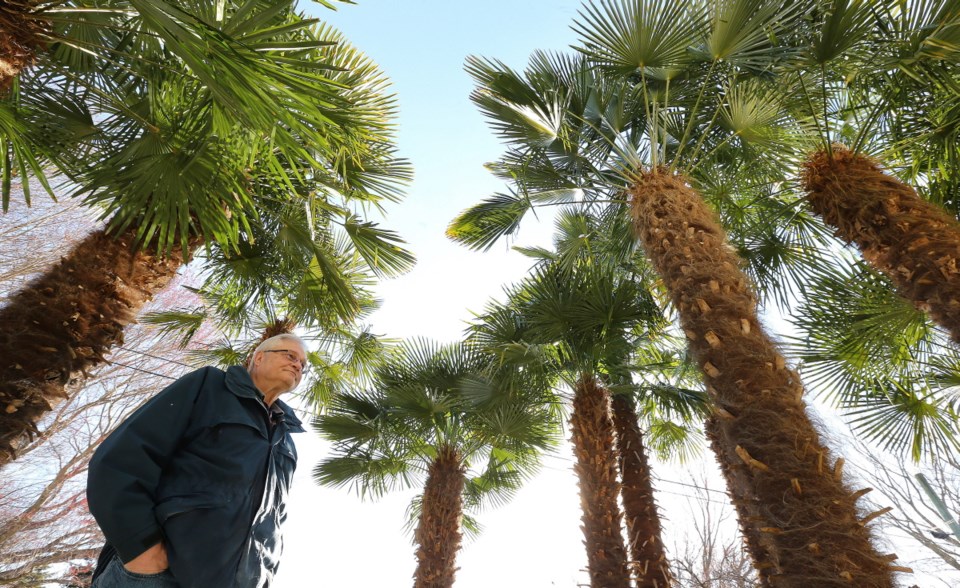It’s always palmy weather at Neil Banera’s house.
That’s because 15 tall, graceful Chinese windmill palms stand like tropical sentries on his small front lawn in Fairfield. He and his wife, Livia Meret, have lived there 19 years — and watched 10 feet of growth in their frond-topped little forest, now up to 25 feet tall.
When they first saw the extraordinary grouping while househunting, their reaction was pretty much “wow,” Banera recalls. They would have bought the house regardless, but the mini-oasis was something of a selling point.
“They’re interesting, that’s for sure,” said Banera, sitting in his living room, where they dominate the view. “Lots of people do stop and chat.”
The Winnipeg native gets a kick out of cutting the grass around his swaying palm trees while relatives are shivering and shovelling back in Manitoba. “In the past, tour buses and horse-drawn carriages would come by. We apparently have the biggest palm-tree garden in Victoria.”
Banera, a retired engineer for the provincial government, estimates the trees are at least 45 years old. Neighbourhood lore has it that a Johnny Appleseed character with a palm fixation planted 18 palm seeds — three at a former farmhouse across the street and 15 on Banera’s property, along with others in Beacon Hill Park.
The palm’s official name is Trachycarpus fortunei in honour of Scottish plant hunter Robert Fortune, famed for smuggling tea cuttings out of China to establish tea plantations in British India in the mid-1800s. When he returned to England, it was with windmill palms for London’s Kew Garden. From there, the trees spread across Europe.
The windmill is the hardiest palm and much in demand in North America for its ability to endure cold winter nights, notes the website realpalmtrees.com. Thanks to its origins in the freezing foothills of the Himalayan Mountains, the trunks have developed a thick fibrous husk used in parts of Asia to make rope.
It’s quite the hairy overcoat up close, but it does the trick.
To keep the palms hydrated, the couple has installed an in-ground sprinkler system and adhere strictly to watering rules — an hour a week during warm months and if it’s really hot, every four days. Watering by garden hose proved too onerous, what with having to move it every hour for 15 hours.
Victoria’s cool, wet winters and even snow haven’t stunted the palms’ growth. When they were smaller, Banera used a broom to brush off any snow that accumulated on the fronds. “Now, they’re way too big.”
In fact, they’ve grown so steadily, he had to cut a little piece out of his roof to accommodate the northernmost palm. “They haven’t done anything to our sewage line yet,” Banera said.



